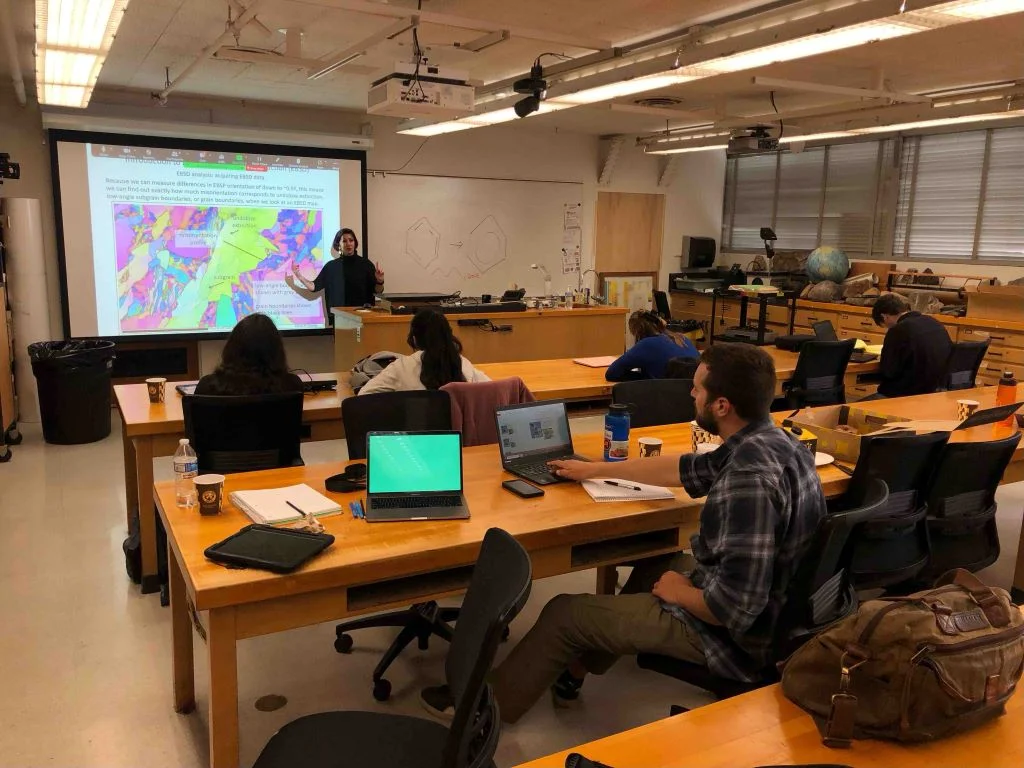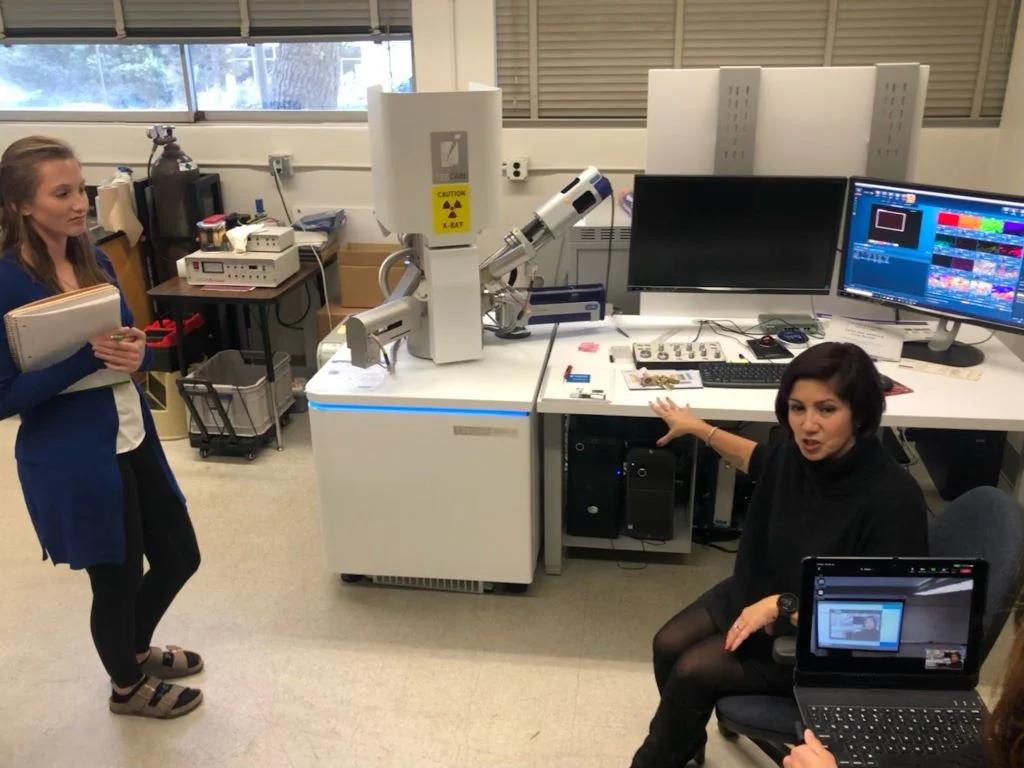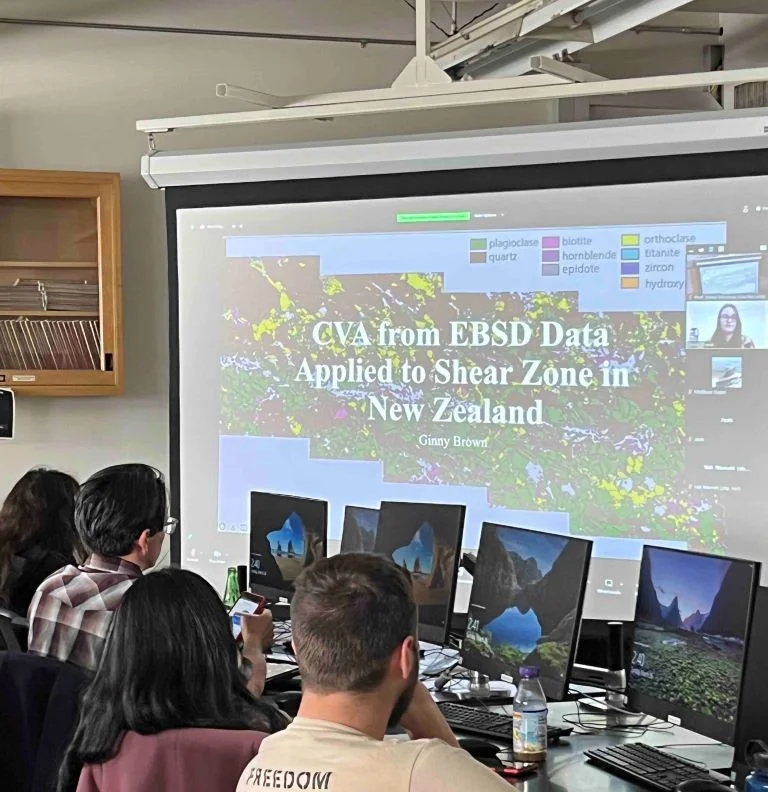
Professor Elena Miranda hosts “2023 EBSD Workshop” in CSUN Dept. of Geological Sciences
Professor Elena Miranda hosts “2023 EBSD Workshop” in CSUN Dept. of Geological Sciences
From March 23-26, Dr. Elena Miranda hosted a highly anticipated four-day workshop centered around the application of electron backscatter diffraction (EBSD) in the exploration of tectonic processes as part of a NSF-funded research project focused on intra-arc shear zones in Fiordland, New Zealand. This engaging event brought together a diverse group of participants exclusively from Hispanic Serving Institutions (HSI), including institutions such as the University of Nevada Las Vegas, Cal State Fullerton, and Texas Tech University. The workshop attracted an impressive cohort comprising both enthusiastic students and knowledgeable faculty members, all eager to delve into the realm of EBSD.
A total of 15 individuals participated in this multi-day workshop, with 8 attendees joining Dr. Miranda in person to experience the workshop’s immersive atmosphere. In an era where virtual connections are increasingly valuable, the workshop also embraced remote engagement, welcoming 7 individuals who actively participated and enriched the discussions through the convenient medium of Zoom. This blended format fostered collaboration and ensured that participants from various geographical locations could actively contribute to the workshop’s vibrant learning environment.

Dr. Miranda’s dedication to providing a supportive and inclusive educational experience was evident throughout the workshop. By intentionally selecting participants from HSI institutions, the event aimed to enhance representation and opportunities for underrepresented communities in the scientific field. This inclusive approach cultivated an atmosphere of shared experiences and diverse perspectives, facilitating deeper engagement and fostering lasting connections among the participants.
The workshop served as an exceptional platform for knowledge exchange, as Dr. Miranda expertly guided the participants through a comprehensive curriculum. Attendees were immersed in practical sessions, acquiring invaluable skills in sample preparation and data collection using the cutting-edge TESCAN MIRA4 FE-SEM and its state-of-the-art EBSD system. These hands-on activities empowered the participants with the necessary tools to engage with advanced scientific instrumentation confidently.
Moreover, Dr. Miranda’s expertise and commitment to effective pedagogy were exemplified by the tutorials provided during the workshop. By fostering an environment of collaboration, inclusivity, and cutting-edge education, Dr. Miranda’s workshop left an indelible impact on all the participants. The knowledge and skills gained during these four days will undoubtedly serve as valuable assets as they continue their academic and professional journeys. As the workshop drew to a close, the participants left with newfound inspiration, empowered to pursue research endeavors and contribute meaningfully to the ever-evolving field of tectonic processes.
Throughout the workshop, the participants engaged in hands-on activities focused on sample preparation and data collection using the cutting-edge TESCAN MIRA4 FE-SEM and its state-of-the-art EBSD system. Under the guidance of Dr. Miranda, they acquired valuable skills in handling the equipment and operating the EBSD system. Dr. Miranda’s tutorials were particularly enlightening, as they offered comprehensive insights into the interpretation and visualization of EBSD data. The participants gained a thorough understanding of how to display EBSD data through maps and various diagrams that effectively illustrated the presence or absence of crystallographic preferred orientation (CPO). These tutorials equipped the participants with the knowledge necessary to analyze and interpret the intricate patterns and orientations of crystal structures, providing them with a solid foundation for future research using these techniques.

The last half of the workshop included a hands-on tutorial in the Geology computer lab, where participants learned how to use MATLAB and the open-source toolbox MTEX to process EBSD data to produce typical maps, pole figures, and inverse pole figures that are commonly used in EBSD publications. In the MTEX tutorial, participants used real EBSD datasets collected at CSUN and MTEX scripts that Dr. Miranda created to give participants a quick on-ramp to process their own data when they returned to their home institutions.
